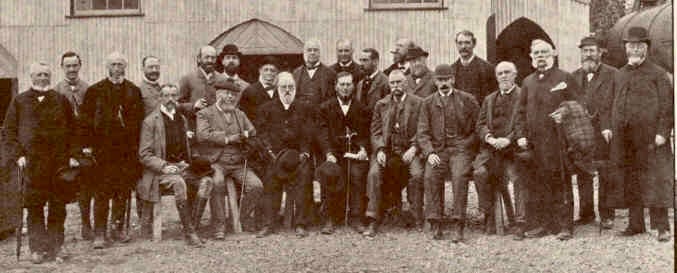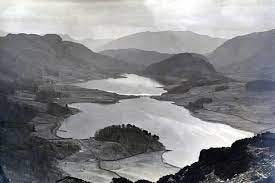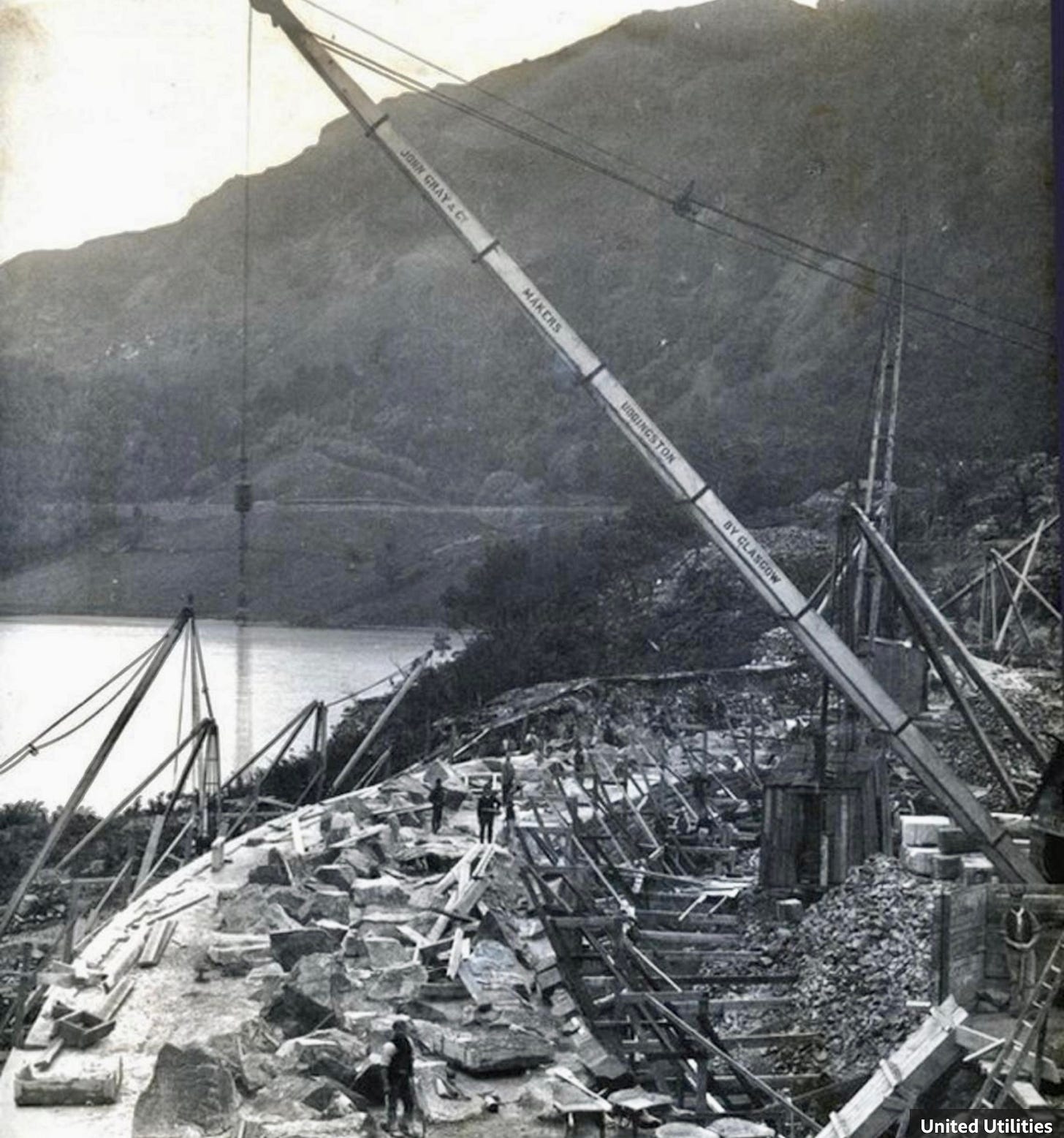How battle to save Thirlmere started world wide Green movement
Failed fight to stop “dazzling” Lake District valley becoming unsightly reservoir for Manchester spawned Britain’s parks, National Trust and today’s global environmental protests.
It was not what you would normally expect to see. Especially not in 1875 at the height of the Victorian era: a pair of portly posteriors. They belonged to two extravagantly whiskered gentlemen of the balding and white-haired type. The pair were crawling on their hands and knees through sopping undergrowth in the grounds of a Lake District stately home.
The two were venerable members of Manchester City Waterworks Committee and they were creeping past an Elizabethan house called Dale Head Hall in Cumberland, concealing themselves in the soaking vegetation as they wriggled forward.
They had adopted this low profile because they were desperate not to be seen by the owner, Thomas Stanger Leathes, who had threatened “severe measures” if they trespassed on his property. The intruders were hoping to get a proper look at the lake that lies in the narrow valley below the house. Unfortunately, the best vantage point was on Leathes’ land.
The two panjandrums of local government imagined they were being unobtrusive. They were trying to carry out surveillance of the most likely site for their city’s urgently-needed new reservoir. If the scheme went ahead, the city would need to buy the land surrounding the water. The two men hoped that their low-key tactics would conceal Manchester’s interest and keep prices low. Those hopes were doomed to disappointment. It proved impossible for such well-fed gents to inspect the location in person while remaining inconspicuous.
They also had to endure a long ride back in wet clothes to Keswick where they became ill and “were laid up for some days.”
Within weeks of this absurd subterfuge, a furious public controversy erupted. Campaigners expressed horror at Manchester’s plan to dam the valley, raise the water level by sixty-four feet, create a reservoir called Thirlmere and provide the rapidly expanding, cholera-prone industrial city with clean drinking water through a ninety-six-mile pipeline.

The ensuing row was conducted in Parliament, public meetings, the press, periodical magazines, pamphlets, and books. From the beginning, spokespeople both for and against the project recognised that much larger issues were at stake than the future of a single lake, however beautiful and the fate of a single city, however, large, thirsty, or disease-ridden.
The opposing parties were seen as representing powerful but irreconcilable ideals. On the one hand was the need to preserve the natural beauty of England’s unspoiled countryside that the Romantic poets had celebrated and which the Lake District symbolised. On the other hand, was the urgent need to meet the requirements of the country’s expanding industries on which Britain’s power and prosperity depended.
Nature-lovers, dubbed The Sentimentalists by their opponents, launched a prolonged, well-supported and heated campaign to preserve the lake. Their passionate pleas were taken seriously by leading newspapers and they were discussed without scorn by many MPs. The conservationists based their case on William Wordsworth’s arguments. The encroaching industrial world was destroying our ability to be human:
“The world is too much with us; late and soon,
Getting and spending, we lay waste our powers;—
Little we see in Nature that is ours.
We have given our hearts away.”
But exposure to unspoiled nature can make us better people. In his poem Tintern Abbey he wrote:
“These beauteous forms… perhaps… have no slight or trivial influence
On that best portion of a good man's life,
His little, nameless, unremembered, acts
Of kindness and of love.”
They stressed that places like the Lake District, by virtue of their beauty, were a fount of happiness and patriotic pride for the English nation. And, as one of the few remaining places spared by industrialisation and the modern world, Thirlmere should be protected. Yet in 1879 there was one clear winner. Parliament brushed aside aesthetic, patriotic and traditionalist arguments.
Individual MPs accused the Sentimentalists of advancing “frivolous”, “selfish” and “elitist” views.
These accusations still dog green campaigners today. MPs gave the go-head for the project by passing the Manchester Corporation Waterworks Act. The Select Committee announced solemnly: “beyond the temporary inconvenience and unsightliness caused by the construction of the works, there will be little or no permanent injury to the scenery.” Parliament authorised Manchester to implement its plans with the vague proviso that it proceeds “with reasonable regard for the beauties of the surrounding landscapes”.
Although the Sentimentalists managed to cause expense, inconvenience, discomfort, and occasionally personal embarrassment to their powerful and much better funded opponents, they had suffered a comprehensive political defeat. Yet there was a surprising paradox. Although the campaign to save Thirlmere had ended in failure with the reservoir finally being built and inaugurated in 1894, the debate over its construction had a lasting influence.
For example, the campaign established in the public mind that some things were valuable even if they could not be assessed in utilitarian terms such as their contribution to full employment or modernising sanitation. It also floated the potent - if nebulous - concept that the whole nation in some sense “owned” places of outstanding beauty. Manchester’s victory was confined to the political world – the city failed to win the hearts and minds of the general public as would become increasingly apparent. In the wake of their defeat over Thirlmere the Victorian campaigners adopted more professional tactics.
These led to early successes such as the creation of the Metropolitan Public Gardens Association in 1876. This established the hundreds of public parks that now exist in towns and cities across the UK. The Selbourne Society of 1886 set up the first nature reserves. Then came the foundation of the National Trust, now Europe’s largest conservation charity, in 1894.
Sixty similar organisations have been set up since then, worldwide. The Lake District National Park, created in 1951, was given wide powers to protect the countryside. Ultimately, the fight for Thirlmere led to today’s multinational environmental movement. It was, as the leading historian of the Thirlmere project, Harriet Ritvo put it, “The Dawn of the Green”. From the moment Manchester scored its Parliamentary win over Thirlmere, it began to lose the battle for public opinion.

The first setback came when it emerged that one member of the Manchester Waterworks Committee had used the £30 million budget for buying the land as a source of interest free loans for himself. Public opinion was further inflamed when the builders tried to renege on promises to build a proper road around the reservoir, the route we today call the A591. Then it became clear the city had ignored pledges to leave the landscape unharmed: an unnatural-looking skirt of exposed mud and stones appeared around the rim of the new reservoir during periods of drought, making a natural lake look artificial.
Above all, the battle for Thirlmere established environmental battle lines for the future. It floated the concept that the number of beautiful green spaces is finite and diminishing.
However, the fight also activated a body of contrary opinion that accuses the green lobby of superficiality, arrogance, and holier-than-thou posturing. At the outset of the conflict, the Manchester Waterworks Committee never dreamed that conservation or aesthetics were important.
They represented the world’s first industrial city and they faced a set of problems no-one had encountered before. Their city’s burgeoning cotton mills were growing explosively but they faced disaster because local water supplies were drying up. The three rivers on which the city was founded, the Medlock, Orwell and Irk had been reduced to a black, stinking, and polluted trickle.
Meanwhile, the population had quadrupled to 370,000 by 1861. The unplanned city rapidly became one of filthiest, most overcrowded, and unhealthy places on earth. Ravaged by waves of cholera in 1832 and 1849, the average age of death for the labouring population fell at one point to just 17. Only a quarter of homes had access to a piped clean water supply with most families surviving by collecting rainwater in cisterns.
The waterworks committee proceeded amid muddle and confusion. Their ignorance extended to Lake District geography. One surveying expedition began at Ullswater which was also initially under consideration as the reservoir site. Having finished their business by early afternoon, the party decided to walk to Thirlmere which did not seem far away.
They had not realised the place marked “Helvellyn” on the map was a 3,100-foot-high mountain. The two oldest committee members, one of whom “could not walk very well”, had to take turns riding the single pack horse which meant their companions had to carry the baggage. At one point the horse sank to its knees in a peat bog and two of the surveying party injured themselves seriously while descending a fellside in the dark. They did not reach Thirlmere until ten at night when they were forced to wait in a pub for a carriage to take them to their hotel in Keswick, ten miles away.
In the end, the committee was persuaded to choose Thirlmere for the reservoir by Cockermouth-born Alderman John Grave. He had made his fortune manufacturing cotton and paper in Manchester. But he had a house in Keswick and so was perfectly placed to soak up local property knowledge. Grave hired three local “ringers”, a cattle dealer, a building contractor and champion fellwalker called Henry Irwin Jenkinson, none of them known to be linked to Manchester, to do the actual buying, and thus hide the city’s involvement.
Canny local landowners were not fooled. They shared Leathes’ opposition to Thirlmere and its surrounding valley being transformed to meet urban needs. They proclaimed their romantic and traditional allegiance to a landscape unspoiled by the forces of industry and materialism.
The City council’s agents were astonished by the ferocity of this resistance - and by how much moral and cash support for the opposition poured in from across the Britain and the English-speaking colonies. A confrontation that Manchester expected to play out as a simple commercial transaction spun off bewilderingly into the realms of ideology, myth, poetry, and heritage. Ironically, until the dispute flared up, Thirlmere had not been rated as a top beauty spot.
The harshness of Thirlmere’s setting made eighteenth century visitors uneasy. James Clarke, a land surveyor, wrote that the valley lacked “anything very entertaining”. Even best-selling Gothic novelist Ann Radcliffe was less than enthusiastic. In 1794 she described it as “a narrow unadorned lake, having little else than rocky fells”. Wythburn at its southern tip was “a poor village”, she wrote.
However, Samuel Taylor Coleridge foreshadowed a change of opinion. He wrote rapturously in his 1803 notebook: “O Thirlmere!” - and went on to celebrate as sublime the very features that repelled earlier travellers including “naked or Ferny crags - ravines, behaired with Birches…dazzling wet places of small rock precipices…Cliffs like organ pipes.” Wordsworth and his friends created Thirlmere’s only literary shrine by carving their initials on a rock to mark the half-way point on the rough track between Grasmere and Keswick.
With their unerring talent for poor public relations, Manchester Corporation would later blow what became the world famous “Rock of Names” to smithereens with dynamite when they finally got around to constructing the A 591. Thirlmere, in short, never became a primary destination for sightseers. Most tourist guides gave Thirlmere a perfunctory mention or omitted it altogether.
To the consternation of Manchester’s Waterworks Committee, the protest against the Thirlmere reservoir proved to be very popular.
Yet the moment its desecration by the forces of modernity was mooted, protests lauding the superlative value of what was to be lost proliferated. The Bishop of Carlisle wrote in a letter to The Times: “Thirlmere is among the choicest of English Lakes…it is as wild as it was centuries ago, and the wooded crags which overhang it are quite unsurpassed in beauty.” To the consternation of Manchester City fathers, the cleric’s view proved very popular.
This is an extract based on a chapter from a new book, The Trophy at the End of the World. You can buy it instantly here:
: https://www.fletcherchristianbooks.com/product/the-trophy-at-the-end-of-the-world
Or you can pick up a copy from the New Bookshop, Main Street, Cockermouth, Bookends in Keswick or Carlisle and Sam Read in Grasmere.
Keep reading with a 7-day free trial
Subscribe to Hidden Cumbrian Histories to keep reading this post and get 7 days of free access to the full post archives.



